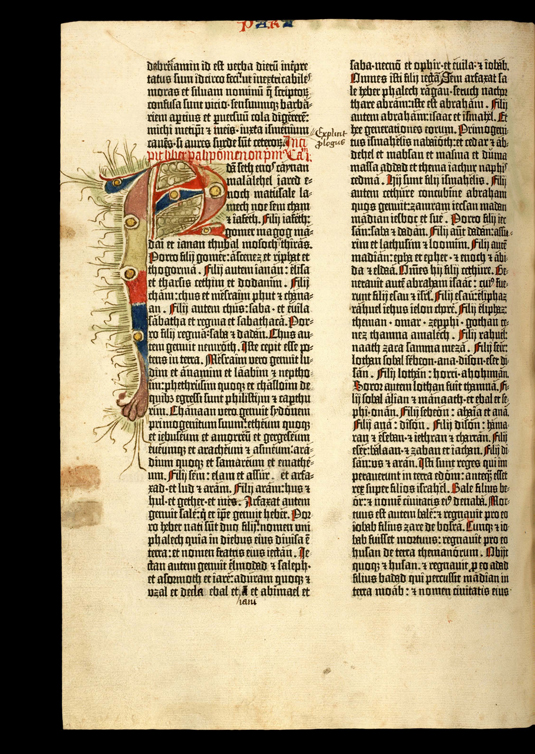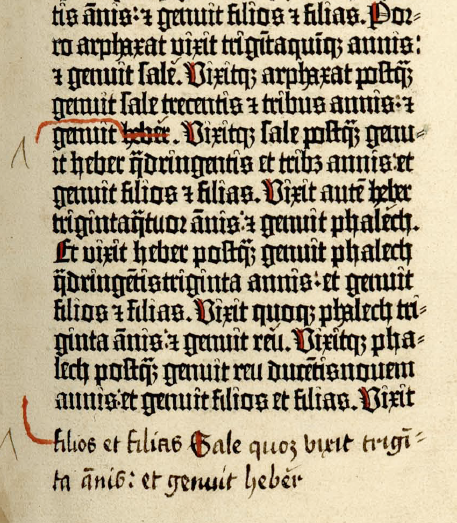The Ransom Center’s two-volume Gutenberg Bible is on permanent display. Every few months the Center’s staff changes the opening, allowing visitors to see different pages and to protect the volumes from overexposure to light.
bible
The Jenson Bible joins the Gutenberg Bible’s page turning
Explore the Harry Ransom Center, search digital collections, or plan your visit. Biblia Latina. Mainz: Johann Gutenberg, 1454–55. Genesis, Chapter I. Volume I:5r Among the most striking features of the two volume Gutenberg Bible is the consistency of its printing and the elegance of its letterforms: the rich black ink,… read more
Gutenberg Bible Page Turning: Genesis, Chapter XI, Volume I:9r
Fall is here and with the turning of the leaves it is time to turn another page of the Ransom Center’s Gutenberg Bible. Our copy of the Bible is full of signs of previous readers and their interactions with the text. A rather interesting example of close reading is found… read more




